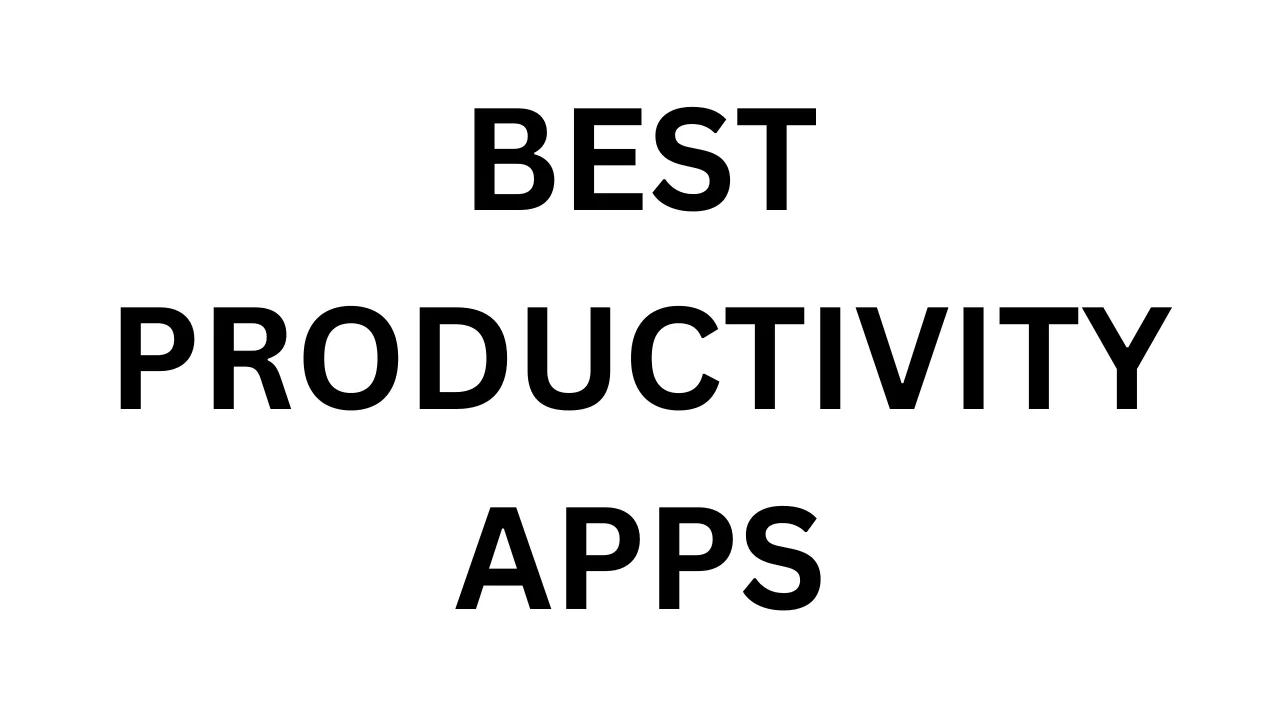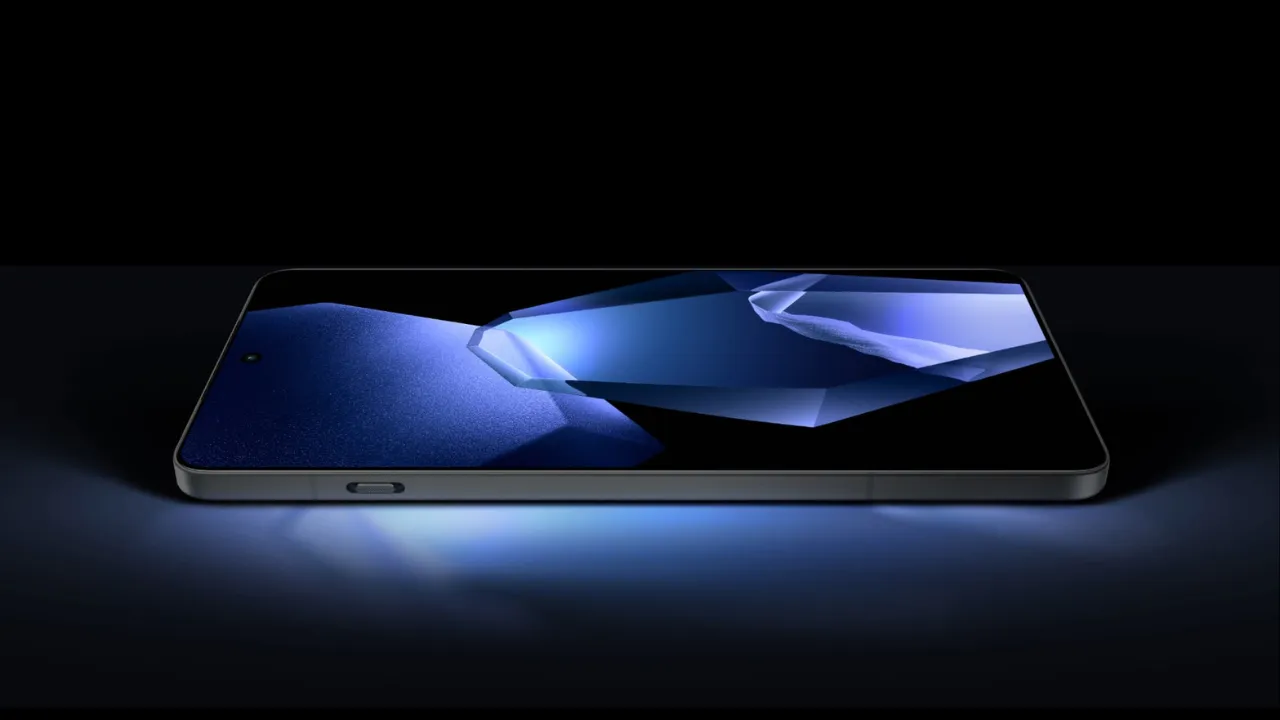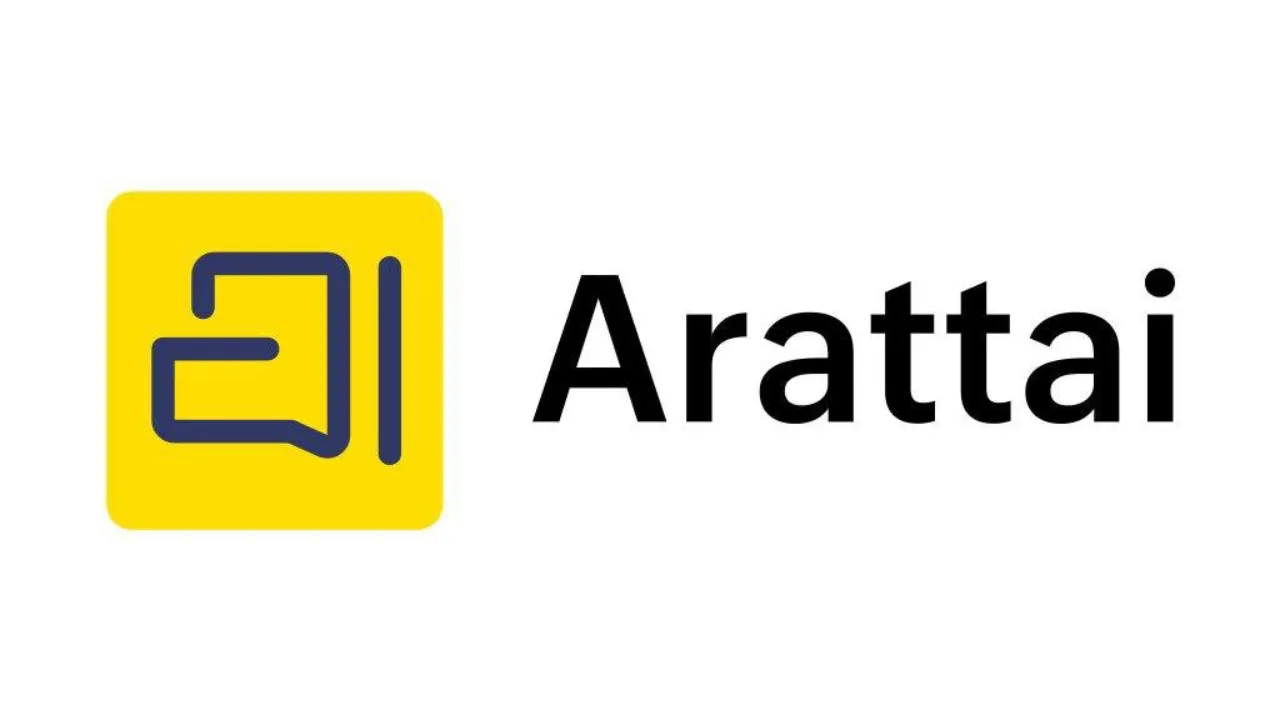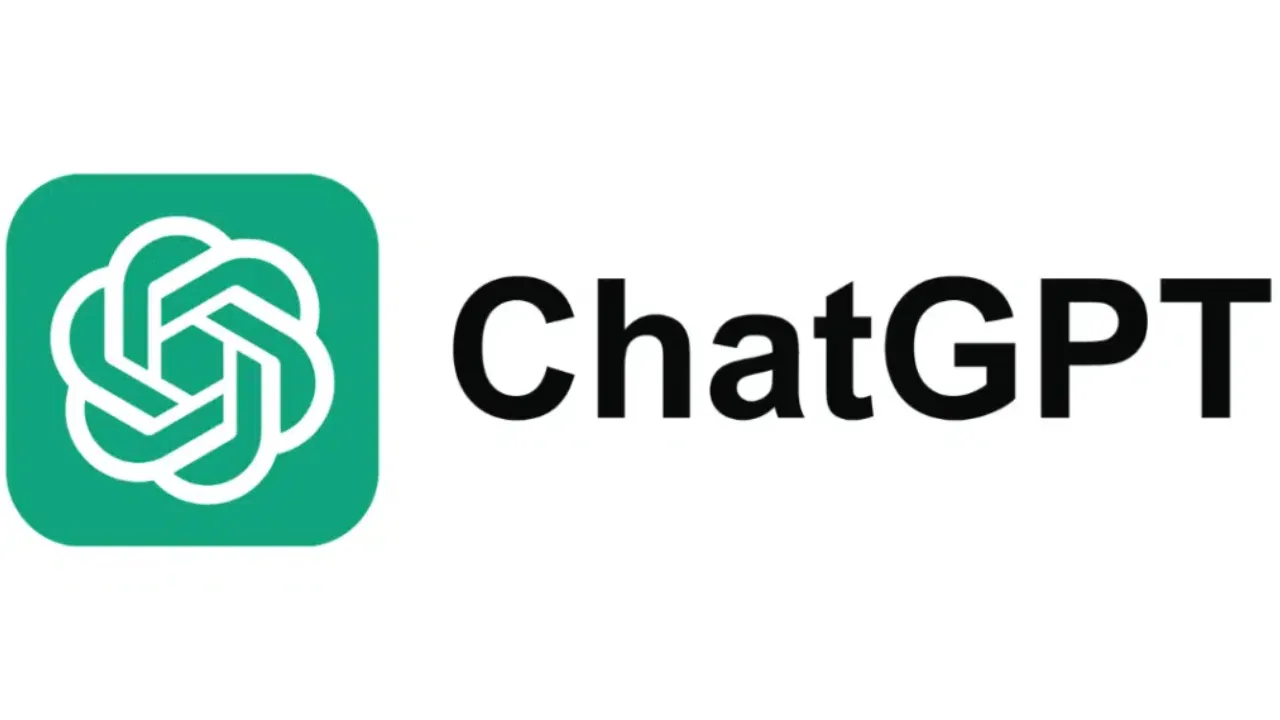Introduction – Why Productivity Apps Matter in 2025
In 2025, being productive isn’t just about doing more—it’s about doing the right things with the right tools. That’s where productivity apps come in. Whether you are a tech lover, remote worker, student, or entrepreneur, these apps help you stay organized, focused, and efficient.
The world is shifting rapidly toward digital workflows. With the rise of remote work, AI-based automation, and fast-paced communication, using traditional methods for task and time management no longer works. Today’s productivity apps are smarter, lighter, and often powered by artificial intelligence, making them ideal for managing your day-to-day routine with ease.
From note-taking to project tracking, from to-do lists to automated reminders, productivity apps can save you hours every week. Some even integrate with other tools like email, calendars, and cloud storage to streamline your entire work system.
In this post, we’ll explore the Top 10 Productivity Apps for Tech Lovers in 2025—apps that are powerful, easy to use, and perfect for your personal and professional growth.
Let’s discover how you can boost your productivity using tools designed for the modern digital world.
1. Notion – The Ultimate All-in-One Workspace
Best for: Note-taking, task management, team collaboration
If there’s one name that stands out in the world of productivity apps, it’s Notion. Designed as an all-in-one digital workspace, Notion allows you to write notes, manage projects, create databases, set goals, and collaborate with teams—all in one place.
What makes Notion unique is its flexibility. You can create custom pages for anything: your personal journal, a reading list, a blog content calendar, or a project roadmap. It’s like building your own productivity system without writing a single line of code.
For tech lovers, Notion offers integrations with tools like Google Drive, Slack, and GitHub. You can also use templates or create your own for faster setup. Whether you’re working solo or managing a remote team, Notion can adapt to your workflow.
Its clean interface, drag-and-drop blocks, and dark mode make it a favorite among modern users. If you’re serious about staying organized in 2025, Notion is one of those productivity apps you can’t afford to miss.
It works seamlessly on desktop, mobile, and web—and yes, it’s free to start. Give it a try, and you’ll understand why millions rely on it daily to get things done.
2. Todoist – Smart Task Manager with AI Features
Best for: To-do lists, goals, and reminders
When it comes to simplicity and speed, Todoist is one of the most powerful productivity apps for organizing your daily tasks. It’s designed to help you quickly capture ideas, set goals, and stay on top of your work—without feeling overwhelmed.
Todoist uses a clean and minimal interface, allowing you to create to-do lists, set priorities, add labels, and schedule reminders with ease. Whether it’s a grocery list, a blog writing schedule, or a product development roadmap, Todoist keeps everything in one place.
In 2025, Todoist has taken things up a notch with AI-powered task suggestions and natural language recognition. Just type “Submit report every Friday at 10 AM” and it sets a recurring task automatically. It’s like having a virtual assistant for your daily life.
You can also collaborate with others, assign tasks, and track productivity using built-in stats. It syncs across all devices—mobile, desktop, and web—so your tasks follow you wherever you go.
If you’re searching for productivity apps that are fast, smart, and easy to use, Todoist is definitely worth exploring. It has both free and premium versions, making it perfect for personal use and professional planning alike.
3. Trello – Visual Project Management for Tech Teams
Best for: Kanban boards, agile workflows, tech startup use
For those who prefer visual planning, Trello is one of the most effective productivity apps for managing projects. Based on the Kanban system, Trello uses a board-and-card layout that makes it easy to organize tasks, track progress, and collaborate with teams.
Each board represents a project, and each card represents a task. You can drag and drop cards between columns like “To Do,” “In Progress,” and “Done.” It’s intuitive and works perfectly for teams that follow agile or scrum methodologies.
Trello is widely used in tech startups, development teams, and content marketing projects. You can add checklists, deadlines, attachments, and even assign tasks to teammates. It also supports powerful integrations with tools like Slack, Google Drive, and Notion.
In 2025, Trello continues to evolve with built-in automation (via Butler) that reduces manual work. For example, you can automate card movement or receive reminders based on due dates.
Trello works on both desktop and mobile, and you can access your boards anywhere with cloud sync. It’s free for basic use and offers advanced features with paid plans.
Among all productivity apps, Trello stands out for its visual clarity and team-friendly design—ideal for tech-savvy users who love structure and speed.
4. Microsoft Loop – Future of Team Collaboration
Best for: Office 365 users, live docs, and brainstorming
If you use Microsoft 365, Microsoft Loop is one of the most exciting new productivity apps to try in 2025. It combines note-taking, task management, and real-time collaboration—all in a single, flexible workspace designed for modern teams.
The core idea behind Loop is live components. These are small blocks—like checklists, tables, or paragraphs—that stay in sync across Microsoft Teams, Outlook, and Word. Update a task list in one place, and it reflects everywhere instantly. It’s perfect for team discussions, project planning, or even quick brainstorming sessions.
What makes Loop stand out is its seamless integration within the Microsoft ecosystem. If your team already uses Outlook, OneDrive, or Teams, Loop fits in naturally. It feels like working in a shared document, but smarter and more interactive.
Loop also supports collaborative pages where teams can build out ideas, assign responsibilities, and track updates in real time. It’s ideal for hybrid or remote teams who need fast, live editing with minimal friction.
In 2025, Microsoft Loop is shaping up to be a strong competitor in the world of productivity apps, especially for those who value clarity, connectivity, and team efficiency.
5. Google Keep – Lightweight and Fast Notes App
Best for: Quick notes, syncing across devices
Sometimes, you just need a quick and simple way to capture thoughts—and that’s where Google Keep shines. It’s one of the lightest and fastest productivity apps available, perfect for jotting down notes, checklists, and reminders on the go.
Google Keep offers a clean, minimal interface where you can write notes, create color-coded lists, set location or time-based reminders, and even voice-record ideas. Everything syncs instantly across your Google account, whether you’re on mobile, desktop, or Chrome browser.
What makes Google Keep unique is its speed and simplicity. There are no complicated menus or features to slow you down. Just open, type, and save. You can label notes, pin important ones, and even collaborate with others in real time.
In 2025, it’s still one of the best free tools for fast digital note-taking. Whether you’re a student collecting research ideas, a content creator saving blog outlines, or a professional setting quick task reminders—Google Keep helps you capture it all effortlessly.
Among today’s productivity apps, Google Keep is a perfect choice if you want something light, reliable, and clutter-free. It may not replace full-featured platforms like Notion, but for quick thoughts—it’s unbeatable.
6. Slack – Communication That Keeps Teams Focused
Best for: Team chats, integrations, bots, remote work
In the world of team communication, Slack has become a go-to name—and for good reason. It’s one of the most powerful productivity apps designed specifically to keep teams connected, organized, and focused, no matter where they are.
Slack replaces scattered emails with organized channels where conversations stay clear and topic-specific. Whether you’re managing a tech project, content team, or remote startup, Slack helps everyone stay on the same page. You can send direct messages, share files, schedule calls, and react with emojis—all in real time.
One of Slack’s biggest strengths is integration. It works with hundreds of tools like Google Drive, Trello, Notion, GitHub, Zoom, and more. You can also use bots and workflows to automate repetitive tasks, like daily stand-ups or reminders.
In 2025, Slack continues to evolve with AI-powered summaries, improved search, and smart suggestions that make team work faster. You can access Slack via desktop, mobile app, or browser, and everything stays synced instantly.
If you’re serious about remote productivity and clear communication, Slack is more than just a chat app—it’s a digital office. Among productivity apps, it stands out for real-time collaboration and team alignment.
7. Focus To-Do – Pomodoro Timer + Task Manager
Best for: Focused work sessions, ADHD-friendly workflows
If you struggle with staying focused or constantly get distracted, Focus To-Do is one of the most helpful productivity apps you can use in 2025. It combines the science-backed Pomodoro Technique with a built-in task manager to help you stay on track.
The Pomodoro Technique works by breaking your work into 25-minute focus sessions, followed by short 5-minute breaks. This method improves concentration, reduces fatigue, and boosts mental clarity—especially useful for students, developers, writers, and anyone dealing with attention issues.
Focus To-Do makes this easy by offering a timer, to-do lists, reminders, and progress tracking all in one app. You can set tasks, assign them to focus sessions, and even track how much time you spend on each activity.
What makes it great for ADHD-friendly workflows is its structure and simplicity. You’re never overwhelmed with too many features, and the app gently reminds you when to take breaks or resume work.
Focus To-Do is available on Android, iOS, Windows, and macOS. It syncs across all platforms and is free to get started.
Among all productivity apps, this one truly helps you stay in the zone—and finish your work without burnout.
8. Evernote – Revamped Classic for Digital Organization
Best for: Web clippings, long-term note storage, multi-device sync
Evernote has been around for years, but in 2025, it has reinvented itself as one of the smartest productivity apps for digital note-taking and long-term information management. Whether you’re saving research, planning content, or organizing personal notes, Evernote makes everything easy to find and manage.
The app lets you create rich notes that include text, images, voice memos, attachments, and links. You can clip articles from the web, scan documents using your phone camera, and tag everything neatly for future reference. It’s like having a second brain that remembers everything for you.
Evernote syncs across all your devices—mobile, desktop, tablet—so your data is always available when you need it. The new design is cleaner and faster, with a better search function and improved performance.
For tech lovers, Evernote also integrates with Google Calendar, Slack, Gmail, and other tools to streamline your daily workflow. You can create task lists, set reminders, and even build notebooks for different projects.
Among all productivity apps, Evernote stands out as a reliable tool for managing information over the long term. If you like structure, searchability, and digital minimalism, Evernote is worth revisiting in 2025.
9. Zapier – Automate Your Repetitive Tech Tasks
Best for: No-code automations, tech workflows, integrations
If you’re tired of doing the same tech tasks over and over again, Zapier can be a total game changer. It’s one of the most powerful productivity apps for automating workflows—without needing to write a single line of code.
Zapier connects over 5,000 apps like Gmail, Google Sheets, Trello, Slack, Notion, and even ChatGPT. You can set up custom “Zaps”—automated workflows that trigger when certain actions happen. For example, you can automatically save email attachments to Google Drive or get a Slack alert when someone fills out your form.
In 2025, Zapier’s automation tools are even smarter. It now offers AI-powered triggers, filters, and multi-step workflows that help you save time and reduce errors in daily tech routines.
It’s especially useful for developers, marketers, bloggers, and solopreneurs who want to streamline repetitive processes—like sending reports, updating spreadsheets, or syncing data between apps.
Zapier works via a simple visual interface and is fully cloud-based. There’s a free plan to get started, and advanced users can upgrade for more features.
Among today’s best productivity apps, Zapier stands out as your silent assistant—doing boring tech tasks so you can focus on creative, high-impact work.
10. Obsidian – Offline Note-Taking for Power Users
Best for: Developers, markdown fans, linking thoughts
If you’re someone who likes deep thinking, writing in markdown, or organizing knowledge like a personal wiki, Obsidian is one of the most advanced productivity apps available in 2025. It’s designed for power users who want full control over their notes—offline and without clutter.
Obsidian stores all your notes as plain text .md files locally, which means your data is completely in your hands. You don’t need the internet to access your content, and everything stays lightning fast.
Its most powerful feature is note linking. You can connect ideas using internal links, creating a network of thoughts. This helps with long-form writing, research, coding documentation, or personal knowledge management.
Obsidian also supports plugins for calendars, task management, tables, and more. Whether you want a second brain system, a Zettelkasten setup, or a coding journal, Obsidian adapts to your needs.
Though it’s more technical than apps like Evernote or Google Keep, it’s loved by developers, researchers, and serious writers.
Among all productivity apps, Obsidian is ideal if you want privacy, customization, and deep thinking—without distractions. It’s free, fast, and works across platforms. Once you get used to it, there’s no going back.
Bonus: AI Tools That Boost Your Productivity in 2025
Quick look at emerging tools like ChatGPT, Gemini, and Claude
AI is not the future—it’s the present. In 2025, several AI-powered productivity apps have changed how we work, write, and think. If you’re a tech lover, these tools can instantly improve your workflow and decision-making.
ChatGPT (by OpenAI) is an all-in-one assistant for writing, brainstorming, email replies, coding help, and even business planning. You just type your query, and it delivers quick, human-like responses. Perfect for professionals, students, and creators.
Google Gemini is deeply integrated into the Google ecosystem. It helps with smarter document editing, email replies, meeting summaries, and content creation—right inside tools like Docs, Gmail, and Sheets.
Claude (by Anthropic) is known for safe, helpful long-form writing support. It’s great for summarizing PDFs, generating content ideas, and writing articles in a human tone.
These tools don’t just save time—they boost clarity, creativity, and accuracy. They reduce manual work and help you focus on important tasks.
If you’re exploring modern productivity apps, adding AI tools to your toolkit is no longer optional—it’s essential. Try them for planning, writing, or automating repetitive tasks, and you’ll see the difference within days.
Also Read: Shocking Truth: What Is a Prompt & Why You Need It Now In 2025
Conclusion – Choose What Works Best for You
In a fast-moving digital world, the right productivity apps can help you do more with less effort. Whether you’re managing a team, building a startup, studying online, or simply trying to stay organized, there’s a tool out there built for your lifestyle.
If you love structure and flexibility, tools like Notion and Trello give you total control. For lightweight, quick-access needs, Google Keep and Focus To-Do are perfect companions. If you rely heavily on communication, Slack and Microsoft Loop offer real-time collaboration with smart features.
Need powerful note storage? Evernote is your go-to. Want privacy and control? Try Obsidian. For workflow automation, nothing beats Zapier. And if you’re exploring the future of productivity, AI tools like ChatGPT, Gemini, and Claude are already reshaping how we work.
Remember, no single app fits everyone. Start by identifying your core needs—task tracking, note-taking, communication, or automation—and choose apps that blend smoothly into your daily habits.
In 2025, productivity isn’t about using more tools—it’s about using the right ones. Test a few, keep what works, and let go of the rest.
You don’t need to do everything—just focus on what moves you forward.
FAQs – Common Questions About Productivity Apps in 2025
1. What are productivity apps and why are they important?
Productivity apps are digital tools that help you manage time, tasks, notes, communication, and workflows more efficiently. In 2025, they’re essential for staying organized in both personal and professional life.
2. Which is the best productivity app for beginners?
If you’re just starting out, Todoist or Google Keep are great choices. They’re simple, free, and easy to use—ideal for basic task tracking and quick note-taking.
3. Are these apps free or paid?
Most productivity apps offer free versions with essential features. Apps like Notion, Slack, and Obsidian have free plans, while advanced features may require a paid subscription.
4. Can I use productivity apps without internet?
Yes. Apps like Obsidian work fully offline. Others like Evernote and Notion offer offline access to some extent, depending on your device and settings.
5. How do I choose the right productivity app for me?
Start by identifying what you need—notes, tasks, team chat, or automation. Then try a few apps from each category and stick with the one that feels intuitive and fits your workflow.













